Myra (Demre)
Q652024Myra: town in Lycia, modern Demre. The ancient town is especially well-known because it was the residence of Nicholas of Myra, the original saint behind Santa Claus.
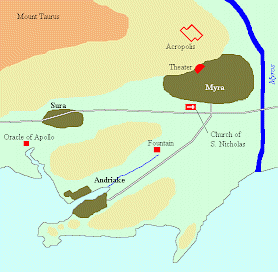
Myra, situated on the west bank of the river Myros, was well-known for two reasons: its port Andriake, one of the few save havens along the rocky shores of ancient Lycia, and its temple of Apollo, where the future was predicted by observing the appetite of sacred fishes.note There was also a sulfurous spring to the south of the city, from which a small river named Andrakos flowed to the port, where it emptied itself into the Mediterranean Sea.
Like all Lycian towns, Myra appears to have been settled from the late Archaic age. Some of the Lycian rock tombs near the theater belong to the oldest monuments of the city, although the majority dates to the fourth century BCE. Behind them was the acropolis, which had once been occupied in the Bronze Age, appears to have been abandoned, but was again in use in the Classical period. In the fifth century BCE, the acropolis walls were renewed, and a sanctuary was dedicated to a legendary hero.
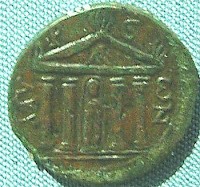
In the fourth century BCE, the lower town of Myra also received city walls, and in the next century, it became - due to its position on a fertile plain - one of the six leading towns of Lycia.note When the Ptolemaic king Alexander X Alexander was sent into exile in 88 BCE, he considered Myra to be a fitting royal residence.
The town had a market place, temples, a town hall, a gymnasium, and a bathhouse that was built by the Romans in the third century CE. The temple of Artemis Eleuthera was called the most splendid building of Lycia. And of course, it had a well-known harbor.note
Myra was destroyed in 141 CE, but rebuilt by a rich man named Opramoas of Rhodiapolis, who is known to have paid for the restoration of the gymnasium and the shrine of Artemis. He also erected a statue to the goddess Tyche and spent lavishly for the emperor's cult.
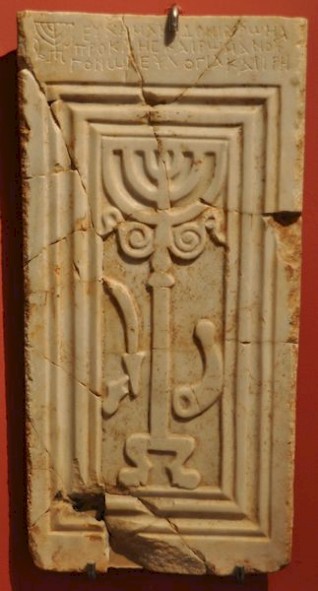
Among the main buildings of Myra were the granaries in Andriake, the sea port, which was situated about four kilometers southwest of the main city. These buildings were erected after 129 by the emperor Hadrian, and were meant to serve the Roman army: in case of a war in the east or north, troops could be transferred more easily. The site was well-chosen because the harbor, essentially the estuary of the small Andriakos river, was protected against storms by a large promontory.
In the harbor used to be at least one island, which has now become part of the mainland; reportedly, the first church, built by Bishop Nicholas, stood over here. Russian archaeologists have been digging over there in the 1990s. The Christian bishop himself was buried just outside the city in a church that was built by Byzantine emperor Justinian.
In 2009, a Jewish synagogue was discovered - the first evidence for Judaism in Lycia, dating back to the fourth or fifth century. Several finds can today be seen in the Archaeological Museum of Antalya.
Today, the theater is one of the few surviving archaeological remains of the ancient city. It is quite well-preserved. In Antiquity, however, the town was especially famous for its temple of Artemis, which was shown on the urban coins.
According to a medieval legend, bishop Nicholas of Myra destroyed the temple of Artemis in Ephesus, one of the Seven Wonders of the Ancient World; the truth may be that he managed to get the temple of the goddess in his own town closed.
 Myra, Lycian tomb |
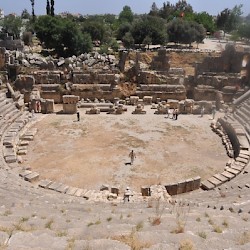 Myra, Theater, General view |
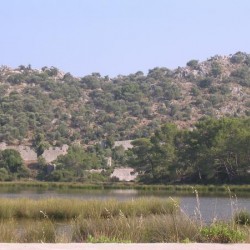 Myra, Harbor, Remains of the granaries |
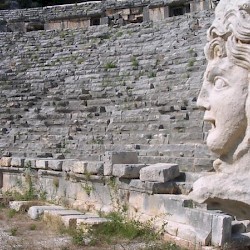 Myra, Theater, Seats and face of Hermes |